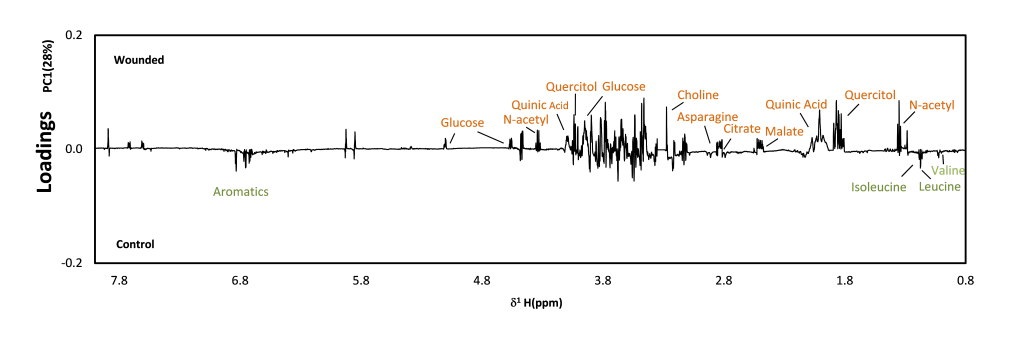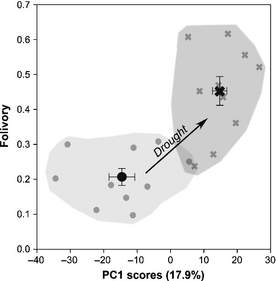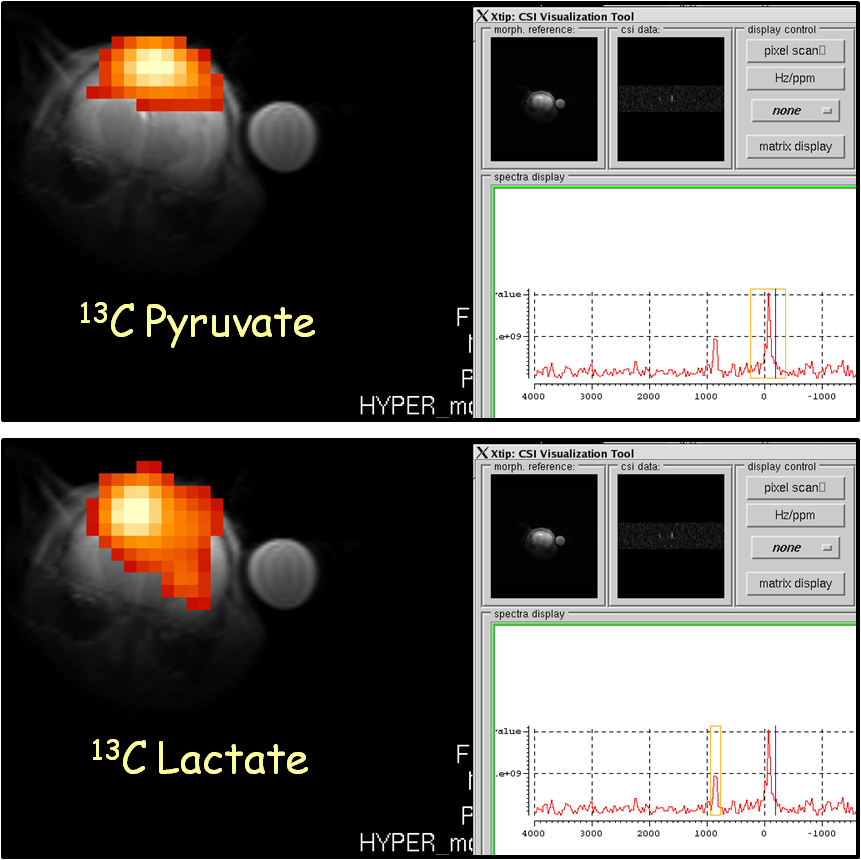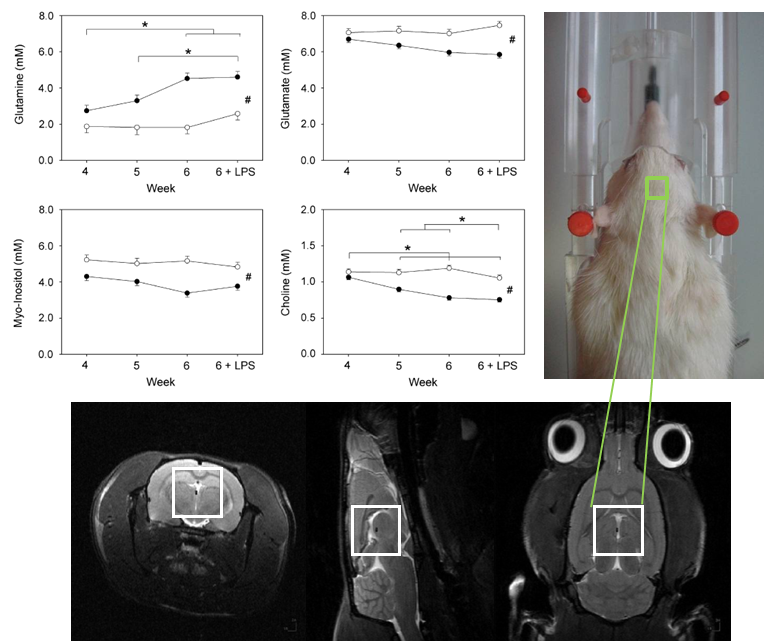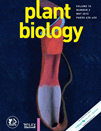 “Metabolomic responses of Quercus ilex seedlings to wounding simulating herbivory” By Jordi Sardans, Albert Gargallo-Garriga, Míriam Pérez-Trujillo, Teodor Parella, Roger Seco, Iolanda Filella, Josep Peñuelas. Plant biology. April 2013. DOI: 10.1111/plb.12032.
“Metabolomic responses of Quercus ilex seedlings to wounding simulating herbivory” By Jordi Sardans, Albert Gargallo-Garriga, Míriam Pérez-Trujillo, Teodor Parella, Roger Seco, Iolanda Filella, Josep Peñuelas. Plant biology. April 2013. DOI: 10.1111/plb.12032.
Plants defense themselves against herbivory at several levels. One of these levels is the synthesis of inducible chemical defenses. By using NMR metabolomic technique we studied the metabolic changes of plant leaves after a wounding treatment simulating herbivore attack in the Mediterranean sclerophyllous tree Quercus ilex. First, an increase of glucose concentration linked to an increase of photosynthetic rates was observed in wounded leaves. There was also an increase of concentrations of C-rich secondary metabolites such as quinic acid and quercitol both related to the shikimic acid pathway and linked to the defense against biotic stress. There was also a shift in N-storing amino acids from leucine and isoleucine to asparagine and choline.

The observed higher content of asparagine is related to the higher contents of choline through serine that has been proved to be the precursor of choline. Choline is a general antiherbivore and pathogens deterrent. The study shows the fast metabolic response of Q. ilex to defend its leaves based in a rapid increasing production of quinic acid, quercitol and choline. The results also confirm the suitability of 1H NMR-based metabolomic profiling studies to detect the global metabolome shifts after a biotic stress in tree leaves, and therefore its suitability in ecometabolomic studies.
